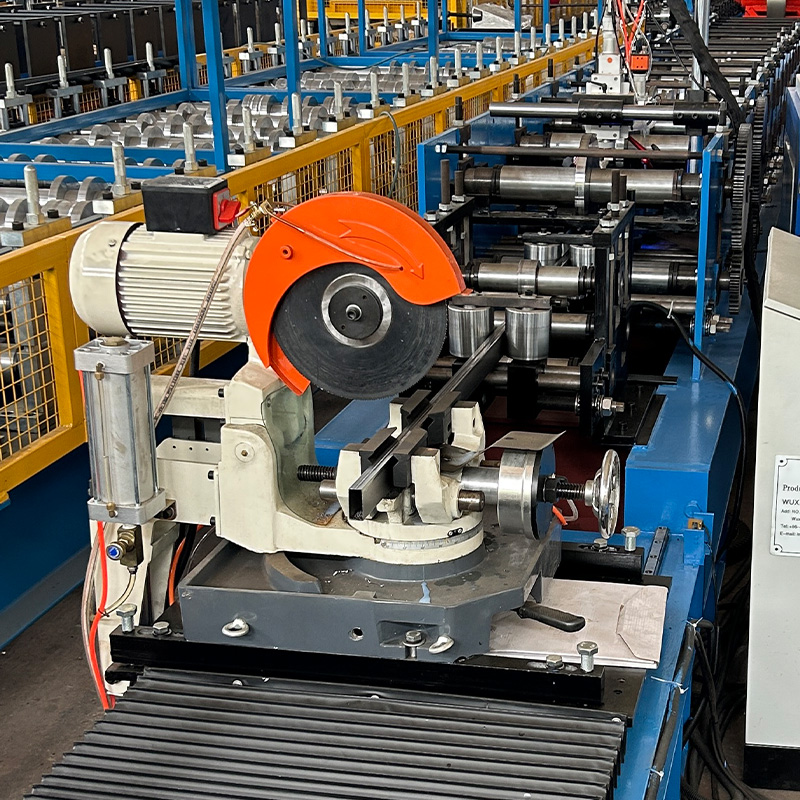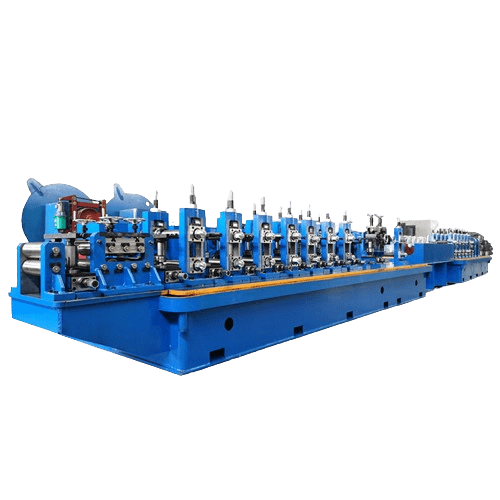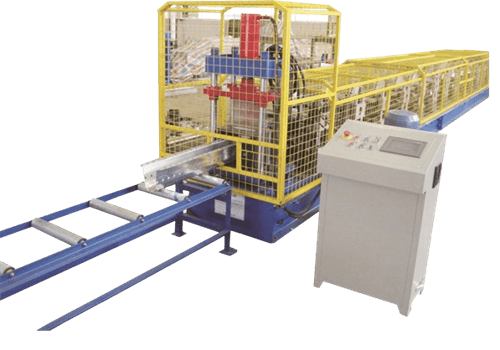Imagine a machine that can transform thin sheets of metal into the building blocks of homes, offices, and even industrial structures. That’s the magic of a light gauge steel machine. These remarkable machines are revolutionizing construction by offering a faster, more sustainable, and incredibly versatile alternative to traditional wood framing.
But what exactly are light gauge steel machines, and how do they work? Buckle up, because we’re about to dive deep into the world of these metal marvels!
Function of Light Gauge Steel Machines
Light gauge steel machines, also known as light steel framing (LSF) machines, are essentially metalworking factories condensed into a single, powerful unit. Their primary function is to take thin sheets of galvanized steel (typically ranging from 0.018″ to 0 .138″ thick) and manipulate them into various shapes, most commonly C-shaped studs and U-shaped tracks. These formed steel components then become the foundation for walls, floors, and even roofs in modern construction projects.
Think of it like this: Imagine a cookie-cutter for metal. Instead of cute animal shapes, a light gauge steel machine uses specialized dies to form the steel into specific profiles. These profiles then interlock like Lego pieces, creating a strong and lightweight framework.
Here’s a breakdown of the key steps involved in a light gauge steel machine’s operation:
- Feeding the Steel: Coils of galvanized steel are loaded into the machine.
- Roll Forming: The steel is continuously fed through a series of rollers that progressively bend and shape the metal into the desired profile.
- Punching and Cutting: Dies within the machine punch holes for fasteners and cut the formed steel to specific lengths.
- Stacking or Conveying: The finished steel components are automatically stacked or conveyed for easy collection and use.
The entire process is remarkably fast and efficient, allowing light gauge steel machines to churn out a significant amount of framing material in a short period.
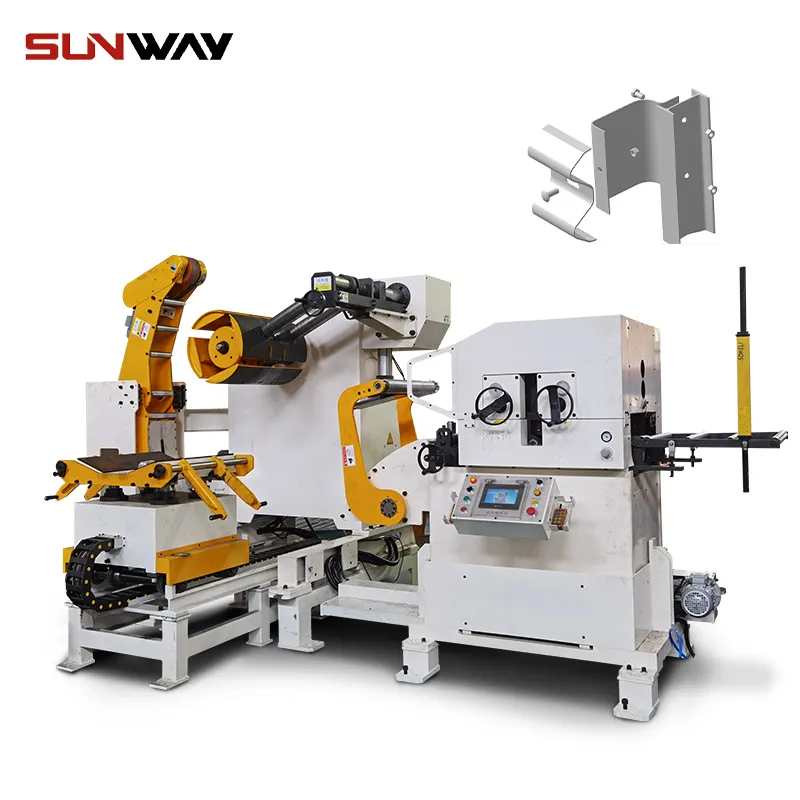
Types of Light Gauge Steel Machines
Not all light gauge steel machines are created equal. There are several types available, each catering to specific needs and production capacities. Here’s a breakdown of the most common variations:
- Automatic Light Gauge Steel Framing Machines: These are the workhorses of the industry. Fully automated, they require minimal operator intervention and offer the highest production rates.
- Semi-Automatic Light Gauge Steel Framing Machines: A balance between automation and affordability, these machines require some operator input but still offer significant production speed.
- Manual Light Gauge Steel Framing Machines: These are ideal for small-scale projects or situations where customization is paramount. They require more operator skill but provide the most flexibility in terms of profile creation.
Choosing the right machine depends on several factors:
- Production Volume: How much framing material do you need to produce per day?
- Project Complexity: Do you require standard profiles or more specialized shapes?
- Budget: Automatic machines offer higher production but come at a premium cost.
Additionally, some light gauge steel machines can be customized to produce a wider variety of profiles, including:
- Floor joists
- Door and window headers
- Lintels
- Specialty channels and angles
This level of versatility makes light gauge steel machines incredibly adaptable to various construction projects.
Here’s a table summarizing the function, types, and applications of light gauge steel machines:
| Function | Types | Applications |
|---|---|---|
| Form thin steel sheets into C-studs, U-tracks, and other profiles | Automatic, Semi-Automatic, Manual | Walls, floors, roofs, non-load bearing partitions |
| Punch holes for fasteners and cut steel to specific lengths | ||
| Offer high production rates for efficient construction | Residential, commercial, and industrial buildings |
Please note: This table is not an exhaustive list, and there may be additional variations and applications for light gauge steel machines.
Advantages of Light Gauge Steel Machines
Light gauge steel machines are rapidly transforming the construction industry, and for good reason. Here are some of the key advantages they offer:
- Speed and Efficiency: Light gauge steel machines can produce framing materials much faster than traditional wood framing methods. This translates to shorter construction times and quicker project completion.
- Strength and Durability: Don’t let the “light” in light gauge fool you. Steel is incredibly strong and resistant to warping, rotting, and insect damage, leading to a more durable and long-lasting structure.
- Sustainability: Steel is a recyclable material, making light gauge steel construction a more environmentally friendly option compared to wood framing. Additionally, steel buildings often require less overall material, further reducing environmental impact.
- Dimensional Stability: Unlike wood, which can expand and contract with changes in humidity, steel maintains its shape, leading to a more consistent and predictable final product. This translates to fewer issues with doors, windows, and other building components sticking or warping over time.
- Fire Resistance: Steel is a non-combustible material, offering superior fire resistance compared to wood. This can significantly improve building safety and potentially reduce insurance costs.
- Pest Resistance: Termites and other wood-destroying pests pose a significant threat to traditional wood framing. Steel, on the other hand, is completely impervious to these pests, eliminating a major concern for homeowners and builders.
- Versatility: As mentioned earlier, light gauge steel machines can produce a wide variety of profiles. This allows for greater design flexibility and the ability to create structures that cater to specific needs and architectural styles.
- Improved Energy Efficiency: Steel framing can contribute to a more energy-efficient building envelope. The tight tolerances and consistent dimensions of steel studs and tracks lead to less air leakage, reducing heating and cooling costs.
However, it’s important to acknowledge that light gauge steel machines also have some drawbacks:
- Higher Initial Cost: The machinery itself can be more expensive than traditional wood framing tools. However, the long-term benefits of steel construction, such as durability and reduced maintenance, can offset the initial cost investment.
- Thermal Conductivity: Steel conducts heat more readily than wood. This can be a disadvantage in extreme climates, requiring additional insulation to maintain comfortable interior temperatures.
- Specialized Skills: Working with light gauge steel framing requires specialized knowledge and training compared to traditional wood framing methods. This can impact labor costs and project timelines.
- Limited Availability: While light gauge steel construction is becoming increasingly popular, it may not be as readily available in all regions compared to traditional wood framing materials.
-
 Highway Guardrail End Terminal Forming Machine
Highway Guardrail End Terminal Forming Machine -
 Highway U/C Post Roll Forming Machine
Highway U/C Post Roll Forming Machine -
 2 Waves Highway Guardrail Roll Forming Machine
2 Waves Highway Guardrail Roll Forming Machine -
 3 Waves Highway Guardrail Roll Forming Machine
3 Waves Highway Guardrail Roll Forming Machine -
 Electrical Cabinet Frame Roll Forming Machine
Electrical Cabinet Frame Roll Forming Machine -
 Din Rail Roll Forming Machine
Din Rail Roll Forming Machine -
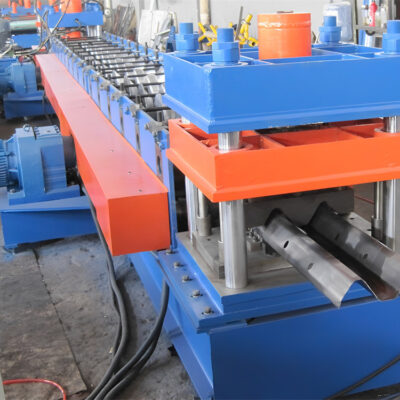 Two waves highway guardrail machine
Two waves highway guardrail machine -
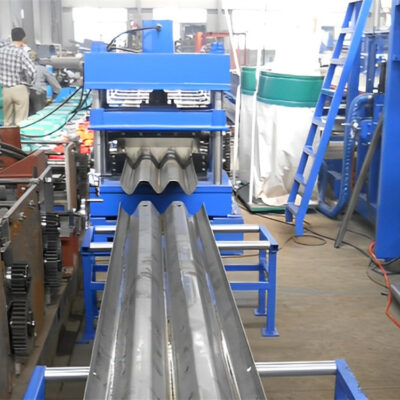 Three waves highway guardrail machine
Three waves highway guardrail machine -
 Cable Ladder Roll Forming Machine
Cable Ladder Roll Forming Machine
Applications of Light Gauge Steel Machines
The versatility of light gauge steel machines allows them to be used in a wide range of construction projects. Here are some of the most common applications:
- Residential Construction: Light gauge steel framing is becoming increasingly popular for single-family homes, townhouses, and multi-unit dwellings. Its speed, strength, and dimensional stability make it an attractive alternative to traditional wood framing.
- Commercial Construction: Light gauge steel is a popular choice for office buildings, retail spaces, and industrial facilities. Its fire resistance and durability make it ideal for these applications.
- Lightweight Construction: Steel’s high strength-to-weight ratio makes it well-suited for lightweight construction projects, such as additions, renovations, and interior partitions.
- Disaster-Resistant Construction: The strength and resilience of steel make light gauge steel framing a valuable tool in areas prone to earthquakes, hurricanes, and other natural disasters.
Here’s a table summarizing the advantages and applications of light gauge steel machines:
| Advantages | Applications |
|---|---|
| Speed and Efficiency | Residential Construction |
| Strength and Durability | Commercial Construction |
| Sustainability | Lightweight Construction |
| Dimensional Stability | Disaster-Resistant Construction |
| Fire Resistance | |
| Pest Resistance | |
| Versatility | |
| Improved Energy Efficiency |
Please note: This table is not an exhaustive list, and there may be additional advantages and applications for light gauge steel machines depending on specific project requirements and local building codes.
Who Should Consider Using Light Gauge Steel Machines?
Light gauge steel machines offer a compelling solution for a variety of construction needs. Here are some key considerations for those contemplating using them:
- Builders and Contractors: If you’re looking for a way to streamline your construction process, improve project timelines, and offer a more durable and sustainable building product, light gauge steel machines are worth exploring.
- Architects and Designers: The versatility of light gauge steel framing allows for greater design freedom. Architects can leverage the strength and dimensional stability of steel to create innovative and visually striking structures.
- Homeowners: If you’re building a new home or planning a major renovation, light gauge steel offers an attractive alternative to traditional wood framing. Consider the long-term benefits of steel, such as fire resistance, pest resistance, and reduced maintenance costs.
Suppliers of Light Gauge Steel Machines
The market for light gauge steel machines is growing rapidly, with a wide range of manufacturers offering various models and capabilities. Here are some factors to consider when choosing a supplier:
- Reputation and Experience: Look for a supplier with a proven track record and a strong reputation for quality and reliability.
- Machine Options: Ensure the supplier offers a variety of machines to suit your specific production needs and budget.
- Service and Support: Reliable after-sales service and technical support are crucial for smooth operation and troubleshooting any issues that may arise.
- Training: Some suppliers offer training programs to help you and your crew get up to speed on operating and maintaining light gauge steel machines.
- Price: While cost is certainly a factor, focus on finding a machine that offers the best value for your investment, considering factors like production capacity, durability, and included features.
Pricing of Light Gauge Steel Machines
The cost of light gauge steel machines can vary depending on several factors, including:
- Level of Automation: Automatic machines offer the highest production rates but come at a premium price. Semi-automatic and manual machines are generally more affordable.
- Production Capacity: Machines with higher production capacities will naturally be more expensive.
- Brand and Features: Well-known brands and machines with additional features will command a higher price tag.
As a general estimate, light gauge steel machines can range in price from around $[20,000] to over $[100,000] or more. However, this is just a starting point, and it’s crucial to get quotes from various suppliers to determine the most accurate pricing for your specific needs.
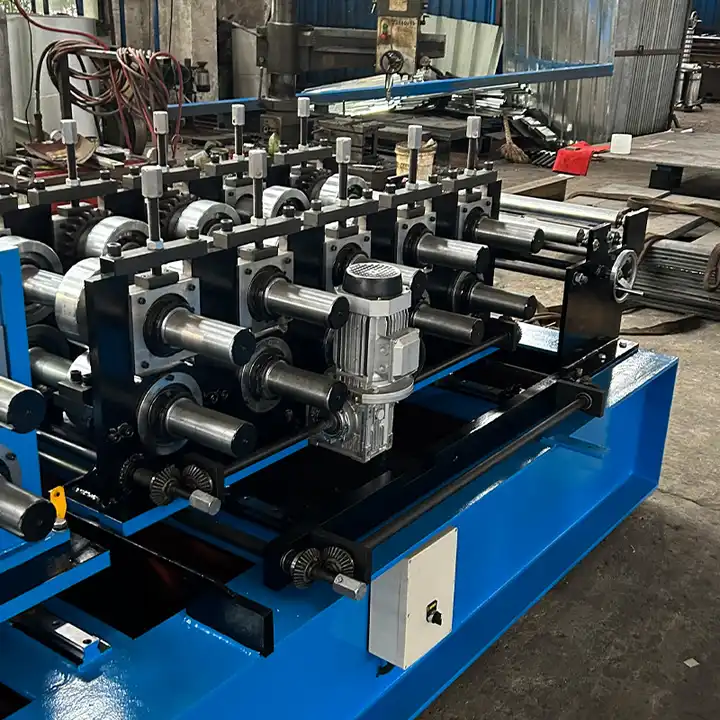
FAQ
Here are some frequently asked questions (FAQs) about light gauge steel machines:
Q: Are light gauge steel buildings safe?
A: Absolutely! Steel is a remarkably strong and fire-resistant material, making light gauge steel buildings highly safe and secure. In fact, they can often outperform traditional wood-framed structures in terms of earthquake and hurricane resistance.
Q: Is light gauge steel construction more expensive than wood framing?
A: The upfront cost of light gauge steel machines may be higher than traditional wood framing tools. However, the long-term benefits of steel construction, such as durability, reduced maintenance, and potential energy savings, can offset the initial investment.
Q: Do I need a special permit to build with light gauge steel?
A: Building permits are required for most construction projects, regardless of the framing material. However, specific requirements can vary depending on your local building codes. It’s always best to check with your local building department before starting any construction project.
Q: How long does it take to build with light gauge steel?
A: One of the significant advantages of light gauge steel is its speed. The efficient production of framing materials and the ease of assembly can significantly reduce construction timelines compared to traditional wood framing methods.
Q: Is light gauge steel framing environmentally friendly?
A: Steel is a recyclable material, and light gauge steel construction generates less waste compared to wood framing. Additionally, steel buildings often require less overall material, further reducing environmental impact. However, the environmental impact of steel production itself needs to be considered.

